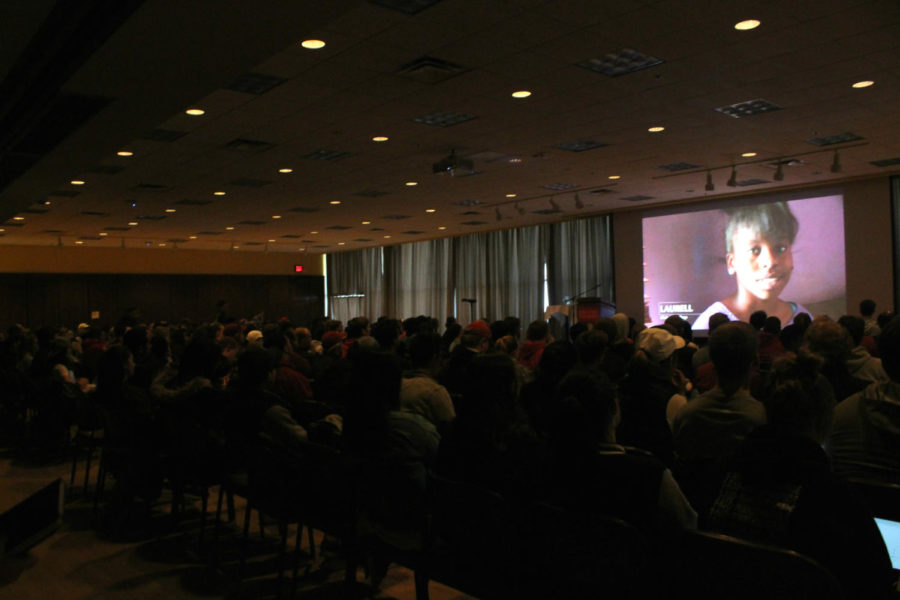Documentary ‘Tested’ follows students prepping for high school determination test
Samantha Vaith/Iowa State Daily
The Sun Room in Memorial Union was packed with people to view a documentary on Mar. 21. The documentary is called “Tested”, and is Curtis Chin’s most recent film.
March 21, 2017
For middle schoolers in New York City, one test determines their future in achieving a high-quality high school education.
The 2015 documentary “Tested” by award-winning filmmaker Curtis Chin aired Tuesday night in the Sun Room of the Memorial Union and was followed by a discussion.
The film showcased a dozen eighth-graders from diverse socioeconomic backgrounds and races as they vie for a spot in an elite school.
With only eight highly-selective public high schools in New York City with admission based solely on the Specialized High School Admissions Test (SHSAT).
The SHSAT tests students on English and math with 95 multiple choice questions in the span of 2½ hours.
Statistics shown in the documentary based on racial disparity in high schools demonstrated the complications ethnically diverse students face when moving on to higher education.
“Black and Hispanic students make up 70 percent of all NYC public school students, but only 12 percent at the specialized high schools,” according to “Tested.”
Students introduced in the film understood the lengths they had to go to prepare for acing the SHSAT test.
Inaki, an eighth-grader, spent a majority of his free time studying.
“I’ve been usually doing about eight hours a week or maybe a little more than an hour a day of just test prep and studying,” Inaki said.
Many of the parents interviewed in the film wanted their children to take the SHSAT test so they could have a better life than they did.
Affirmative action and the model-minority myth were also discussed in the film.
Affirmative action is a policy that favors those who suffer from discrimination in relation to employment and education. The model-minority myth is based on viewing members of a minority group as able to achieve a higher degree of socioeconomic success than the population average.
Larry Cary, former president of Brooklyn Tech Alumni Foundation, sees nothing wrong with having children strive for a high standard as they will have to do that for college as well.
Cary said high schools, as opposed to colleges, should consider acceptance mainly based on test scores alone because “they’re totally different.” Cary said colleges accept people based on their income, their parent’s income and whether they can donate millions to those schools in the future.
Diane Ravitch, research professor at New York University’s Steinhardt School of Culture, Education, and Human Development, feels that students’ ability to achieve a quality education should be limited solely to a test.
“I just don’t feel that our society should be so meritocratic that only people who are good at taking tests should have the best education,” Ravitch said. “I think that’s wrong. I think that we should offer a high-quality education to all kids.”
Chin’s film took a year and a half to make and was screened at eight different countries throughout the world.
Audience members asked about the SHSAT testing program and why the focus isn’t on helping more high schools achieve a status of elite education. Students were also concerned with why parents and kids can’t vote on dismantling the stressful testing situation for middle schoolers, yet mayors are able to.
Chin said mayors in New York see raising high school quality throughout the state as more important than eliminating the SHSAT test.
Payton Hansen, junior in physics, never had to be accepted into a high school when he was younger, as his schooling was based on the district he lived in.
Hansen said he had “no pressure” in moving on toward high school. The students in the film “had more pressure to say the least.”
“Immense pressure changes their identity,” Hansen said.
















